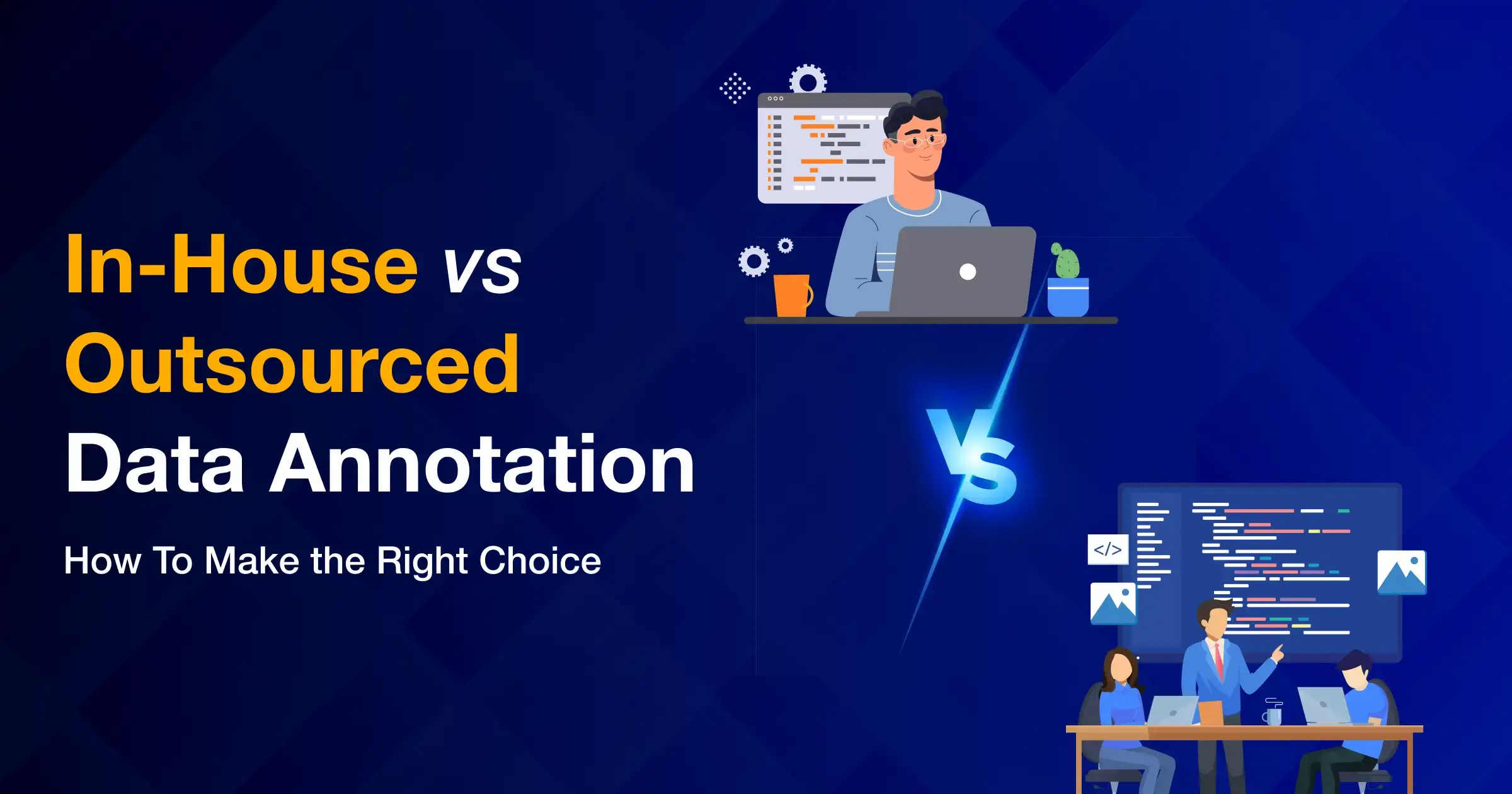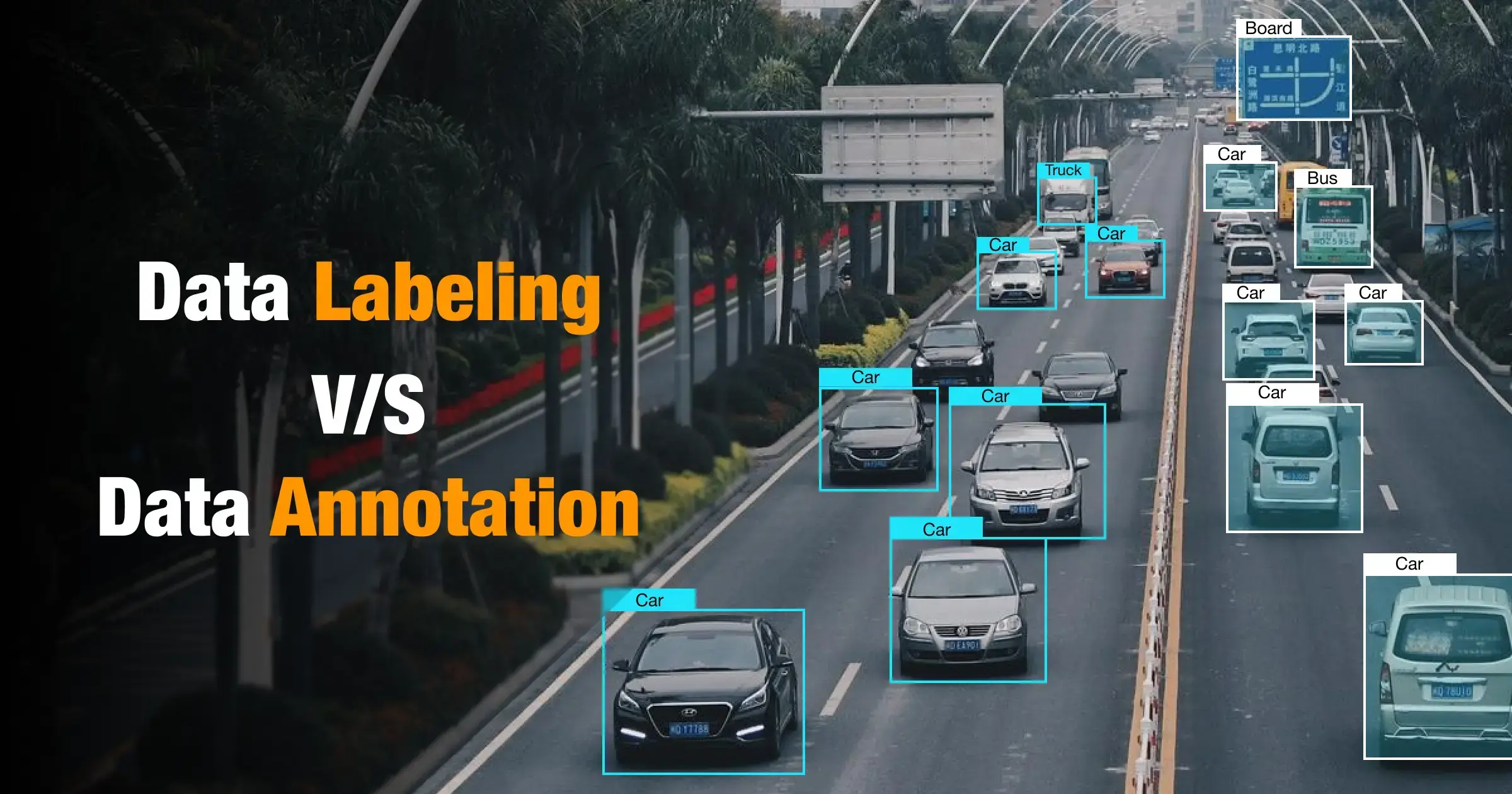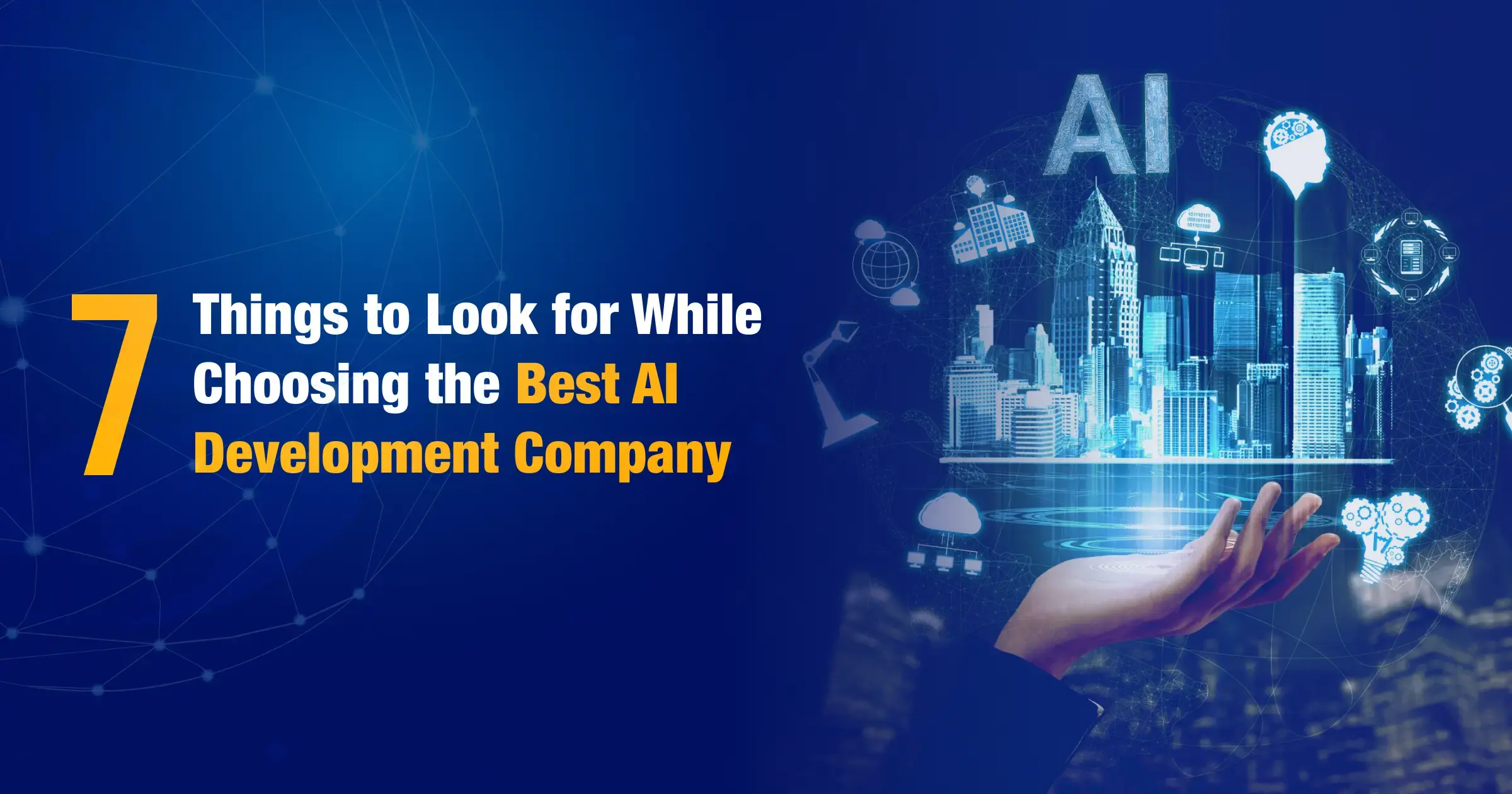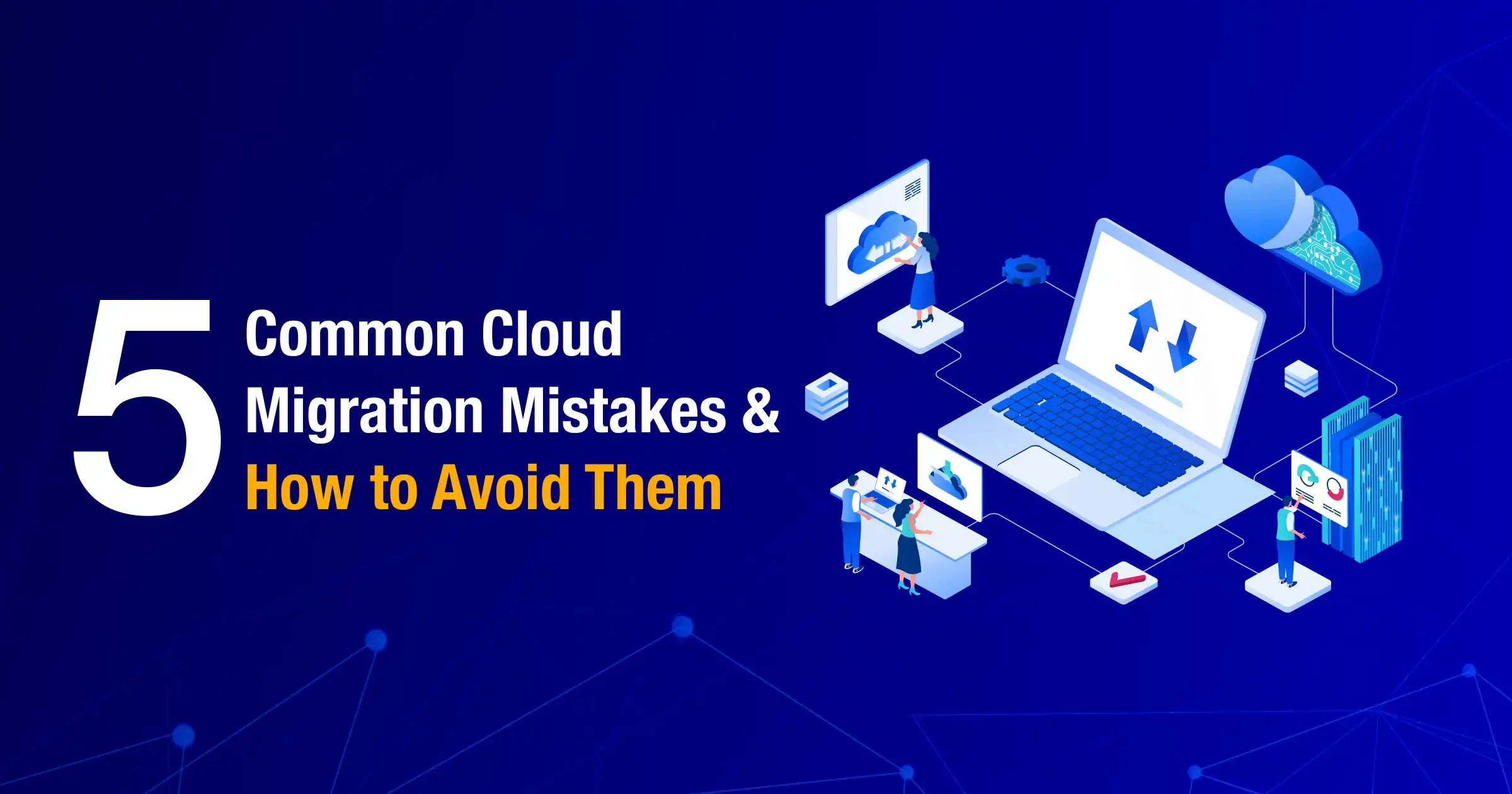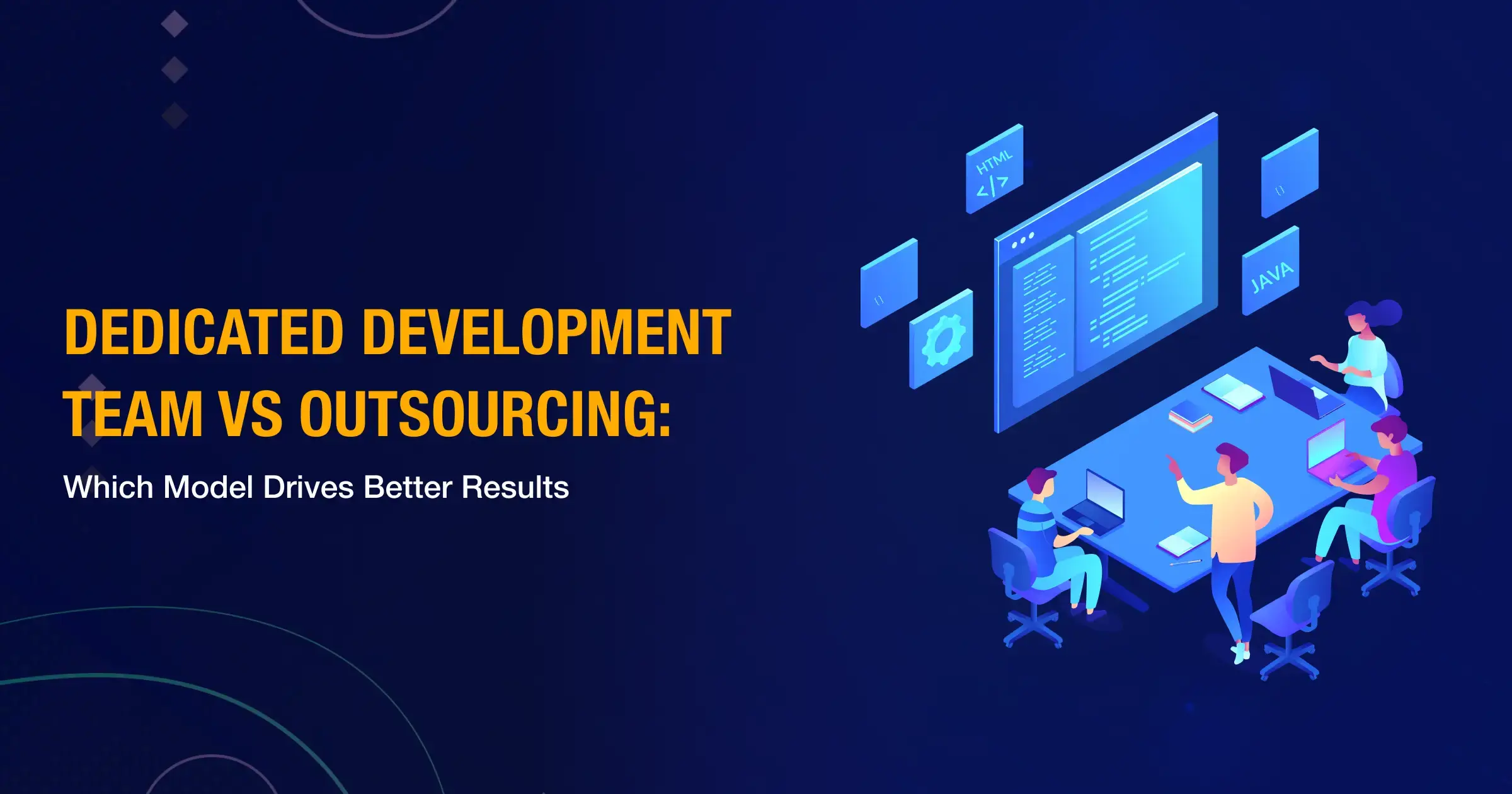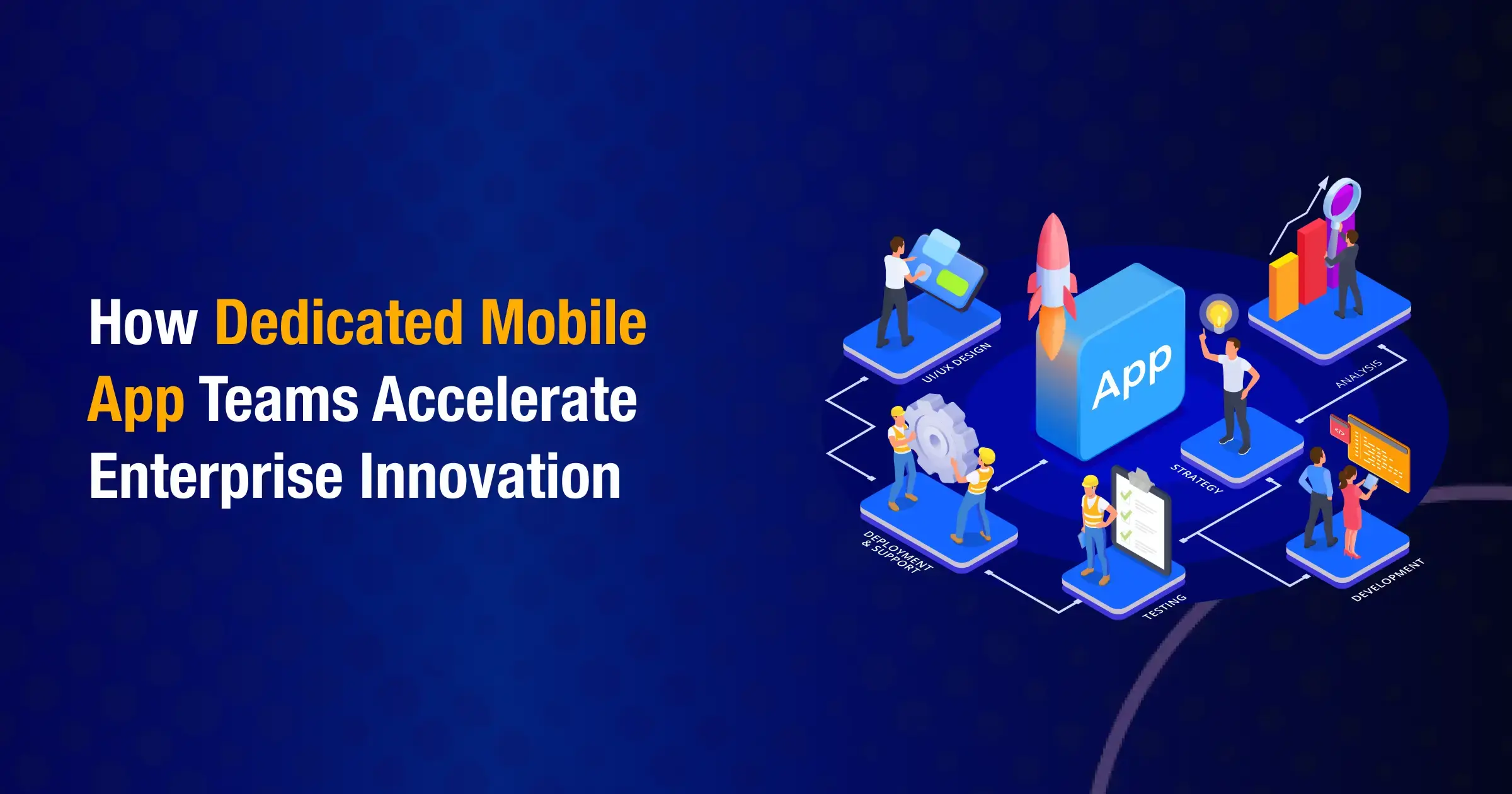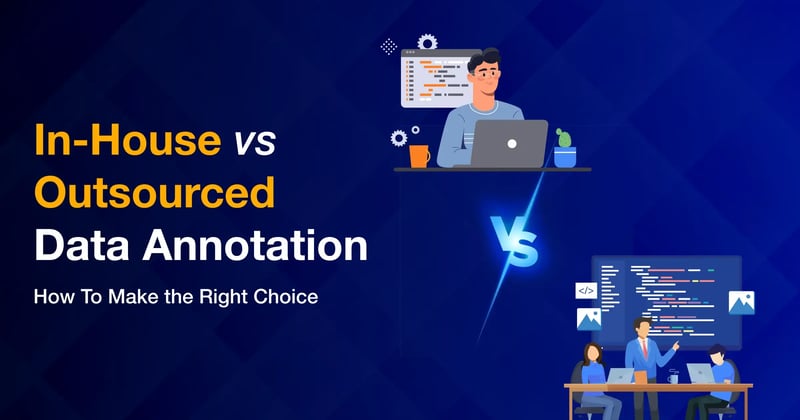
Here's what most AI conversations miss: your algorithms are brilliant, but they're only as smart as the data you feed them.
This reality hits every business that is serious about AI implementation. You’ve invested in developing machine learning models. You've hired talented data scientists.
You've got the infrastructure in place. But then comes the critical question: what about all that raw data so your AI can actually learn from it?
It is important to know that every successful AI project depends on one critical foundation that rarely gets the spotlight it deserves. That is Data annotation services. It is responsible for turning your raw data into a structured one.
What is Data Annotation?
Data annotation is the process of carefully labeling and tagging your raw data so machine learning models can easily recognize patterns, make predictions, and deliver the business value that you are expecting.
The challenge facing most organizations today is deceptively simple but strategically complex. How do you make your large and bulk data into a structured one?
Do you build an internal team to handle data annotation, or do you partner with specialized external providers? The answer is not too obvious, and the wrong choice can derail the entire AI strategy.
This decision impacts everything from your project timelines to your budget, from data security to model accuracy. That’s precisely why smart businesses are weighing factors like cost efficiency, quality control, scalability, and long-term strategic goals.
The stakes are high because if you get this right, you can accelerate your AI initiatives by months or even years.
Why Data Annotation is Critical for Your Business
Data annotation essentially labels each and every data, and with that, you show a machine learning model thousands of examples, carefully labeled, so it learns to identify patterns on its own.
The data also include visual data which helps machines to interpret them, which comes effective for computer vision services.
Imagine you want to modernize your financial business, and you're building an AI system to detect fraudulent transactions. Your raw data contains millions of transaction records, but they're just numbers and text to the algorithm.
Data annotation helps machines learn from examples using labeled data and over time they will be able to differentiate whether it is a "legitimate" or "fraudulent" transaction. They might also tag specific features like unusual spending patterns, geographic anomalies, timing irregularities, and many more.
The same principle applies across different industries. For instance, in healthcare, radiologists might annotate MRI scans to highlight tumor locations, while in retail, teams label customer service conversations by sentiment and intent.
Similarly, engineers tag defects in product images in manufacturing industry and the use cases go on. To put it simply, each label becomes a teaching moment for your AI.
What makes this process business-critical is that the quality of your annotations directly determines how well your AI performs in real-world scenarios.
Sloppy or inefficient labeling leads to unreliable predictions as inconsistent annotations create confused models that make costly mistakes. Missing edge cases result in AI systems that fail when they encounter unusual but important situations.
Consider the stakes in different contexts. If you take financial services for example, poor annotation might mean missing fraud while flagging legitimate transactions.
Or, in healthcare, it could mean overlooking critical diagnoses or creating false alarms that overwhelm medical staff, which creates undesired panic and lack of trust.
The situation is only worse when it comes to autonomous vehicles, where annotation quality literally becomes a matter of life and death.
The business impact is measurable. Companies with high-quality annotated datasets see faster model training, higher accuracy rates, and fewer post-deployment issues. They launch AI products sooner and spend less time fixing problems after launch.
In-House Data Annotation Teams

To build an internal annotation team feels like the natural choice for many organizations. You hire dedicated staff, train them on your specific requirements, and maintain complete oversight of the entire process. This approach offers compelling advantages though having shortcomings of its own.
How In-House Team Benefits
Quality Control
Complete quality control sits at the top of most leaders' priority lists. When your team handles annotation internally, you set the standards, define the processes, and monitor every aspect of quality assurance. There's no ambiguity about expectations and no communication gaps with external vendors.
Domain Expertise
Domain expertise becomes a powerful differentiator when your internal annotators understand your business deeply. A financial services company training annotators on complex derivatives will develop knowledge that's hard to replicate externally. Healthcare organizations can leverage their clinical staff's medical expertise to create more nuanced and accurate labels.
Data Security
Data security concerns disappear when sensitive information never leaves your infrastructure. For heavily regulated industries, this peace of mind can be invaluable. Your data stays behind your firewall, accessed only by employees who've undergone your security training and background checks.
The Hidden Costs and Challenges
The financial reality of in-house teams often surprises executives. You're not just paying salaries. You need annotation tools and software licenses. You need management overhead to coordinate projects and maintain quality standards. You need ongoing training as your projects evolve and new team members join.
Hard to Find Talents
Talent acquisition becomes a persistent headache. Finding skilled annotators is harder than most leaders expect, especially for specialized domains. The learning curve is steep, and training new hires takes months. High turnover in these roles can disrupt project timelines just when you need consistency most.
Limited Scalability
Scalability limitations emerge during critical project phases. When you need to double your annotation capacity for a major initiative, hiring and training new staff takes time you might not have. Seasonal projects become inefficient because you're either understaffed during peaks or overstaffed during valleys.
Increased Complexity
Infrastructure and tool development adds unexpected complexity. Many organizations underestimate the effort required to build, maintain, and upgrade annotation platforms. Your IT team suddenly has another system to support, and your annotators need training on custom tools, which might just add complexity.
Outsourced Data Annotation Teams

Partnering with specialized annotation providers offers a fundamentally different value proposition. Instead of building capability from scratch, you're buying access to established teams, proven processes, and mature infrastructure. With a reliable, you can build artificial intelligence models that tend to perform better.
Faster Time-To-Market
Like software development outsourcing, data annotation outsourcing improves speed to market. Established annotation providers can deploy trained teams within weeks instead of months. They have recruitment pipelines, onboarding processes, and quality assurance protocols already in place. Your projects start faster and reach completion sooner.
Cost Efficiency
Cost efficiency improvements are usually dramatic, especially for large-scale projects. External providers achieve economies of scale that individual companies can't match. They spread infrastructure costs across multiple clients and optimize their workforce utilization across different time zones and project cycles.
Scalability & Flexibility
Flexible scalability solves the resource planning challenges that plague internal teams. Need to triple your annotation capacity for a three-month project? External providers can accommodate those surges without forcing you to hire permanent staff. When the project ends, you scale back down without layoffs or idle resources.
Experienced Professionals
Process expertise comes included with mature vendors. They've refined their workflows through hundreds of projects across multiple industries. They know how to maintain consistency across large teams, implement effective quality controls, and optimize productivity without sacrificing accuracy.
Potential Trade-offs
As effective as the outsourcing option may be, it doesn’t come without considerations or challenges, addressing which gives you a better competitive edge.
Data privacy concerns top the list for most security-conscious organizations because you're sharing potentially sensitive information with third parties, which introduces new risk vectors. So, choose providers having robust cybersecurity practices.
Another common challenge is quality control that becomes more complex when you're managing external teams as communication gaps can lead to misunderstood requirements.
However, outsourcing data labeling can bring you a huge business advantage if you choose the right data annotation service partner, which could be a real game-changer.
Key Factors to Consider When Making Your Decision
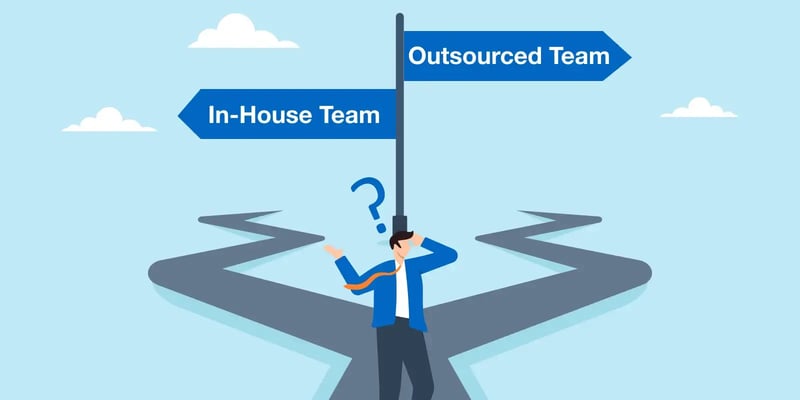
Smart businesses approach the in-house versus outsourced decision by evaluating several critical factors that align with their specific business context and strategic goals.
Data Sensitivity and Regulatory Requirements
Start by honestly assessing your data's sensitivity level. Healthcare records, financial transactions, personally identifiable information, and proprietary business data all require different handling approaches.
Some data simply cannot leave your secure environment due to regulatory requirements like HIPAA, SOX, or GDPR. So, ensure your outsourcing partner has HIPAA compliance to protect PHIs and other safeguards in place.
Compliance frameworks in your industry might dictate your approach. Financial services firms often face strict data residency requirements. Healthcare organizations must ensure any third party meets HIPAA compliance standards. Government contractors might be restricted to US-based annotation teams with security clearances.
Project Volume and Consistency
Consider your annotation needs over time. Do you have steady, ongoing requirements that justify building internal capability? Or are you facing large, time-bound projects that would overwhelm a permanent team?
Variable workloads favor outsourcing because you can scale resources up and down without fixed costs. Consistent, long-term annotation requirements might justify the investment in internal teams, especially when you can achieve economies of scale within your organization.
Accuracy Requirements and Domain Complexity
Evaluate how specialized your annotation requirements are and what accuracy levels your business demands. Repetitive tasks with clear guidelines often work well with external providers. Some experienced providers also help with complex decisions requiring deep domain expertise in consultation with internal subject matter experts.
Consider the cost of errors in your specific application. High-stakes scenarios like medical diagnosis or financial fraud detection might justify the additional investment in internal control and oversight.
Resource Allocation and Opportunity Costs
Think about what building an internal annotation team means for your other priorities. Every dollar and hour spent on annotation infrastructure is time not spent on core AI development, product innovation, or market expansion.
Ask yourself where your organization adds the most unique value. If annotation is a supporting function rather than a core competency, outsourcing might free up resources for higher-impact activities. In that case, you will have a dedicated team who channels their full focus in your project.
How to Choose the Right Outsourcing Partner
If you decide that external annotation providers make sense for some or all of your needs, selecting the right partner becomes critical to your success. The annotation services market includes everything from freelance platforms to enterprise-focused specialists. Clearly evaluate your data annotation outsourcing partner using the below methods:
Industry Expertise
Choose a partner who has innovative solutions for industries having experience in your specific domain. Providers who understand your sector bring valuable context that improves annotation quality and reduces training time. Look for case studies and client references from similar organizations.
Effective QA
Quality assurance protocols separate professional providers from cheaper alternatives. Ask detailed questions about their review processes, consistency checks, and accuracy measurement systems. Request examples of how they handle edge cases and maintain quality across large teams.
Robust Security
Security and compliance capabilities must align with your requirements. So, understand their data handling procedures, employee screening processes, and infrastructure security measures.
High Scalability
Scalability and workforce depth determine how well a provider can handle your future growth. Ask about their capacity to scale up quickly, their geographic distribution of workers, and their ability to maintain quality during rapid expansions.
Seamless Integration
Technology platform compatibility affects how smoothly you can integrate their services into your workflows. Evaluate their tools, APIs, and ability to work with your existing data infrastructure. Consider whether their platform can adapt to your specific annotation requirements.
The Hybrid Approach
Many successful organizations discover that the in-house versus outsourced decision isn't binary. A hybrid approach allows you to optimize for different types of annotation work based on their specific requirements and strategic importance.
Consider how a healthcare AI company might structure its approach. Critical diagnostic data that requires medical expertise stays with internal clinical staff who understand the nuances of different conditions and treatment protocols.
Meanwhile, basic image preprocessing and simple labeling tasks go to external providers who can handle large volumes efficiently.
A financial services firm might keep fraud detection model training data internal due to sensitivity and regulatory requirements. However, they could outsource customer sentiment analysis for marketing applications where the stakes are lower and the data is less sensitive.
This strategy requires more management complexity but offers significant strategic advantages. You maintain control over your most critical data while gaining flexibility and cost efficiency for routine tasks. You can scale your external partnerships up and down based on project needs while preserving internal expertise for high-value work.
The key to successful hybrid approaches lies in clearly defining which types of annotation work belong in each category. Create decision criteria based on data sensitivity, accuracy requirements, domain expertise needs, and strategic importance. This framework helps you make consistent choices as new projects emerge.
In-House Vs. Outsourcing for Data Annotation
To have a clear idea of choosing between in-house team and outsourcing partner for data annotation, check the below comparison table.
|
Criteria
|
In-House Annotation
|
Outsourced Annotation
|
|
Cost
|
High upfront and ongoing
|
Lower, especially at scale
|
|
Control
|
Complete oversight
|
Limited but manageable
|
|
Scalability
|
Slow and resource-intensive
|
Fast and flexible
|
|
Talent Acquisition
|
Your responsibility
|
Provided by vendor
|
|
Domain Expertise
|
Deep (with proper training)
|
Varies by provider
|
|
Data Security
|
Maximum control
|
Depends on vendor protocols
|
|
Time to Start
|
Months to build team
|
Weeks to deploy
|
|
Quality Consistency
|
Direct management
|
Requires vendor oversight
|
Frequently Asked Questions
What is the difference between in-house and outsourced data labeling?
In-house data labeling essentially involves hiring and managing your own team of annotators who work as your employees. They use your tools, follow your processes, and focus exclusively on your projects.
On the other hand, outsourced data labeling involves partnering with external companies, which provide annotation services using their teams, tools, and established workflows.
You can identify the key differences that are evident in terms of control, cost structure, and resource requirements.
Is it better to outsource data labeling for machine learning?
Outsourcing data labeling for machine learning makes sense when you especially need to scale quickly and want to reduce operational overhead. It is also the best option if you lack specialized domain expertise.
Particularly, it is effective for certain situations or project types like large-volume projects, standard annotation tasks, and situations where speed to market is critical.
How do I choose a data annotation company?
Focus on providers with proven experience in your industry and strong quality assurance processes. Always verify their security and compliance certifications match your requirements. Once you’re thorough with that, evaluate their technology platform compatibility and check if they offer scalable solutions.

